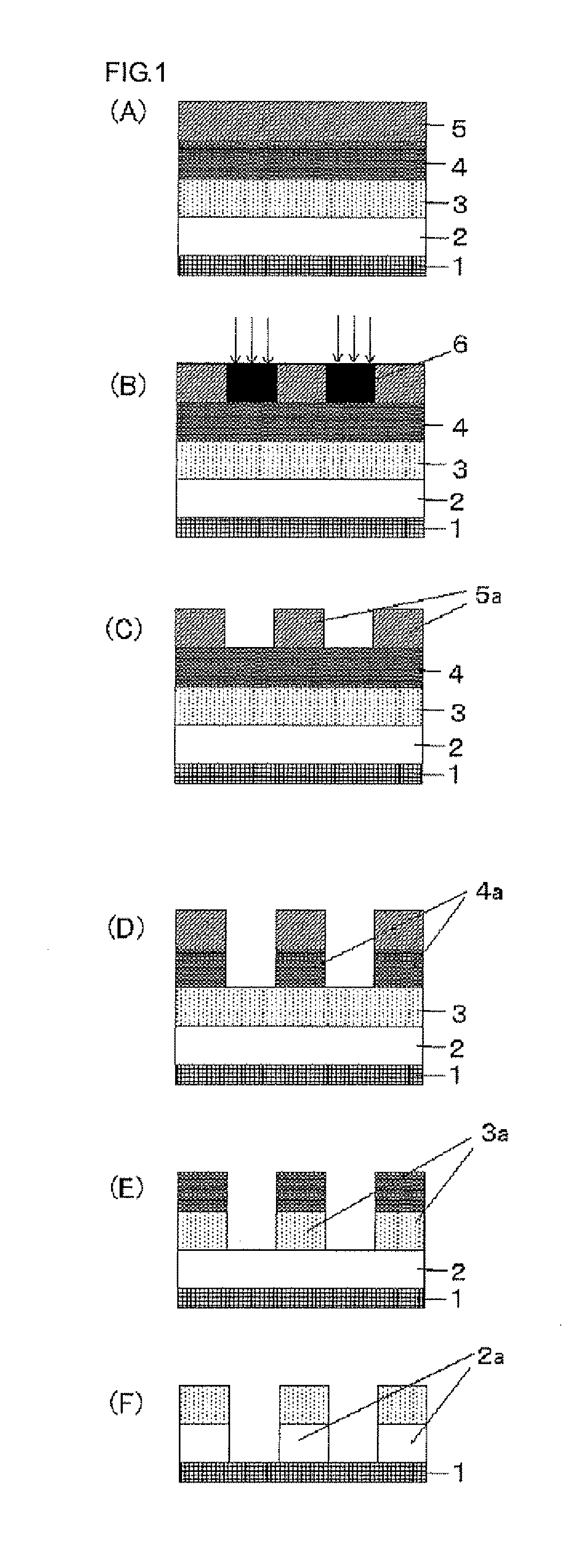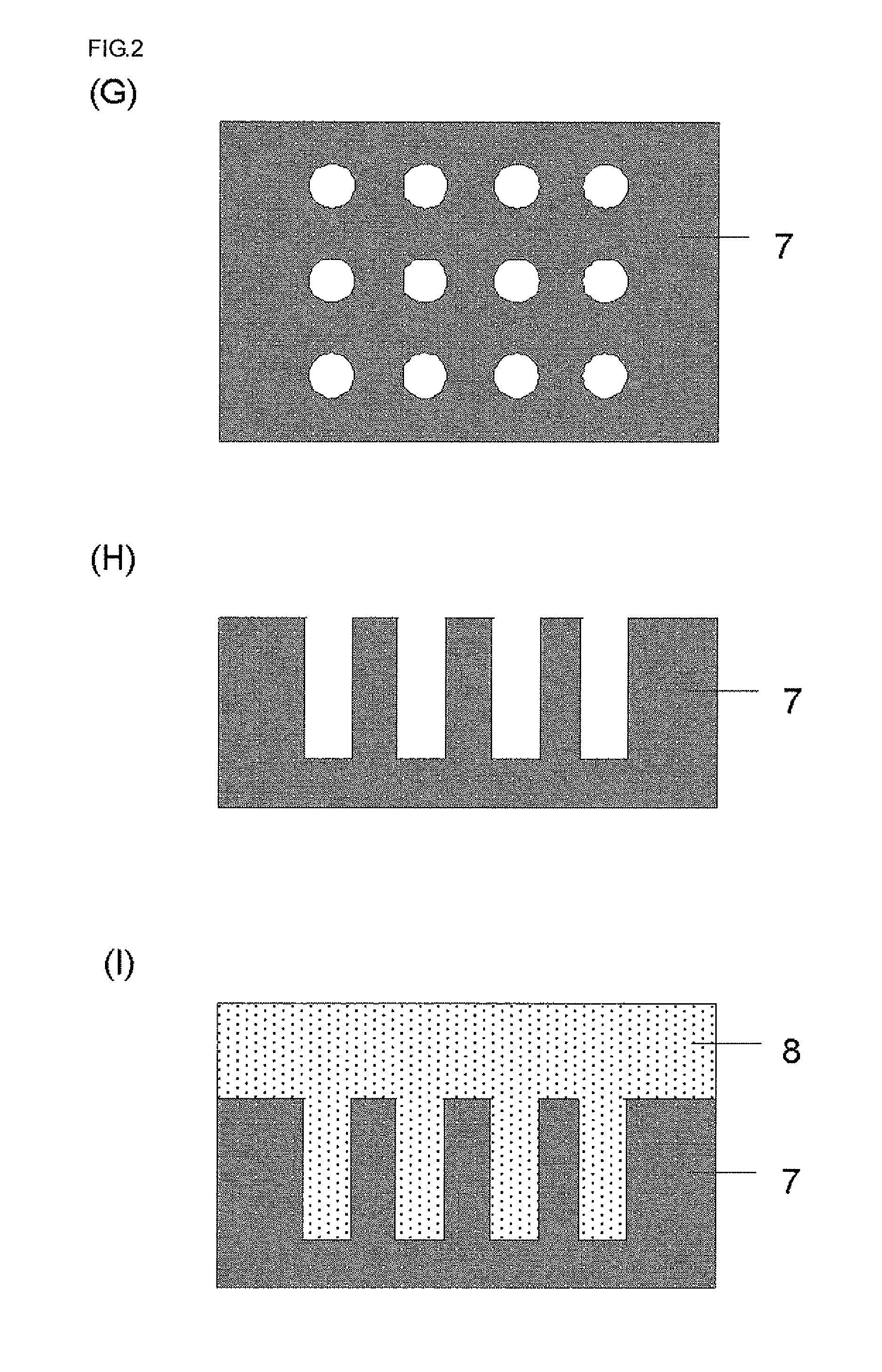Organic film composition, method for forming organic film and patterning process using this, and heat-decomposable polymer
a composition and organic technology, applied in the field of organic film composition, can solve the problems of reducing the etching resistance significantly, not suitable, and the composition having a high resolution tends to have a rather lower etching resistance, so as to achieve excellent filling-up and flattening characteristics, and not adversely affecting other properties
- Summary
- Abstract
- Description
- Claims
- Application Information
AI Technical Summary
Benefits of technology
Problems solved by technology
Method used
Image
Examples
synthesis example 1
Synthesis of Heat-Decomposable Polymers Having an Acetal Structure
synthesis example 1-1
Synthesis of the Heat-Decomposable Polymer (A1) Shown by the Following Formula
[0213]
[0214]Into a mixture of 3.8 g of a cationic ion-exchange resin (Amberlyst (registered trade name) 15) and 100 g of ethyl acetate was added 100 g of diethylene glycol raonovinyl ether at room temperature; and then the resulting mixture was stirred further for three hours. After terminating the reaction by adding 0.8 g of triethylamine, the cationic ion-exchange resin was removed by filtration. The filtrate was concentrated under reduced pressure to obtain 100 g of the polymer (A1) as a highly viscous liquid (Mw=5,200 and Mw / Mn=2.64). The weight reduction rate of the polymer (A1) from 30° C. to 250° C. was 93% by mass.
[0215]Analysis results of 1H-NMR and 13C-NMR of the synthesized polymer (A1) are as follows.
[0216]1H-NMR (600 mHz in DMSO-d6):
[0217]δ=1.78 (51H, d, J=5.1 Hz), 3.40 to 3.65 (136H, m), 4.52 (2H, t, J=5.5 Hz), and 4.70 (17H, q, H=5.1 Hz)
[0218]From the above 1H-NMR analysis result, n=17. 13C-...
synthesis examples 1-2 and 1-3
Synthesis of the Heat-Decomposable Polymers (A2) and (A-3) Shown by the Following Formulae
[0220]
[0221]The polymers (A2) and (A3) were synthesized similarly to the method of Synthesis Example 1-1 except that different raw materials were used. The weight reduction rates of the polymers (A2) and (A3) from 30° C. to 250° C. were 95% and 80% by mass, respectively.
[0222]In addition, a polymer shown by the following formula was used as the heat-decomposable polymer (A4).
[0223]
[0224]The weight reduction rate of the heat-decomposable polymer (A4) from 30° C. to 250° C. was 42% by mass.
PUM
| Property | Measurement | Unit |
|---|---|---|
| temperature | aaaaa | aaaaa |
| temperature | aaaaa | aaaaa |
| height | aaaaa | aaaaa |
Abstract
Description
Claims
Application Information
 Login to View More
Login to View More - R&D
- Intellectual Property
- Life Sciences
- Materials
- Tech Scout
- Unparalleled Data Quality
- Higher Quality Content
- 60% Fewer Hallucinations
Browse by: Latest US Patents, China's latest patents, Technical Efficacy Thesaurus, Application Domain, Technology Topic, Popular Technical Reports.
© 2025 PatSnap. All rights reserved.Legal|Privacy policy|Modern Slavery Act Transparency Statement|Sitemap|About US| Contact US: help@patsnap.com



